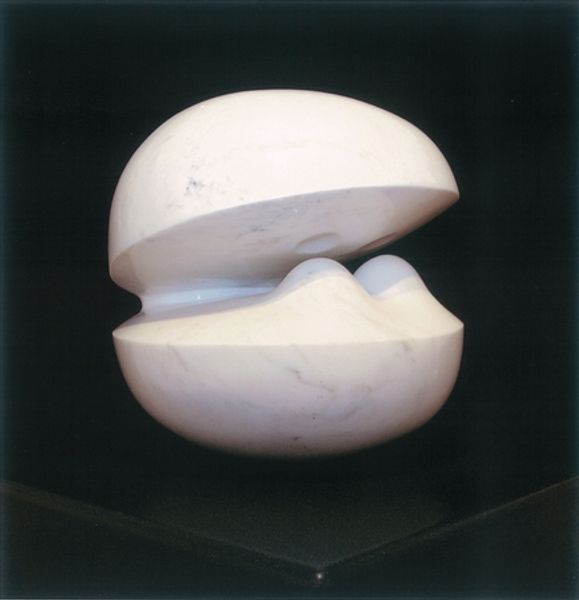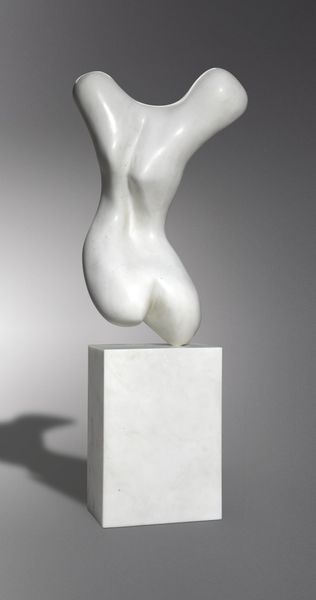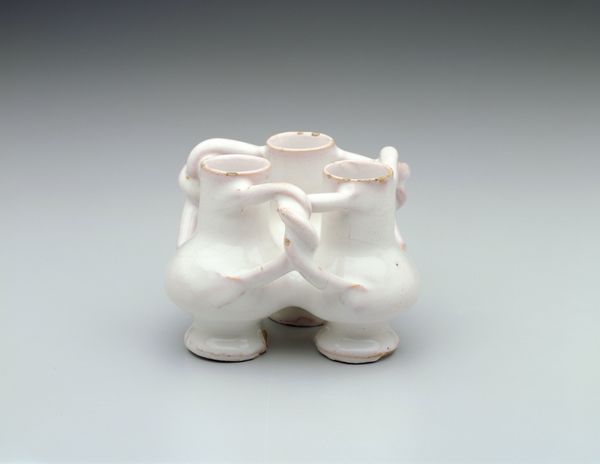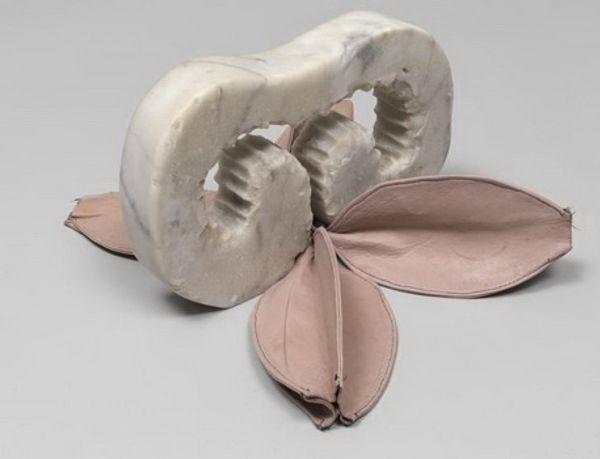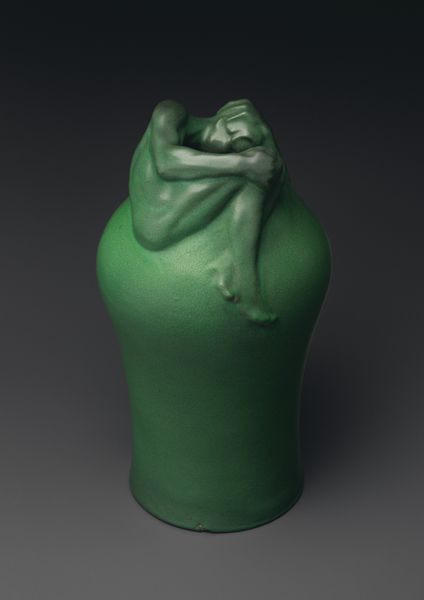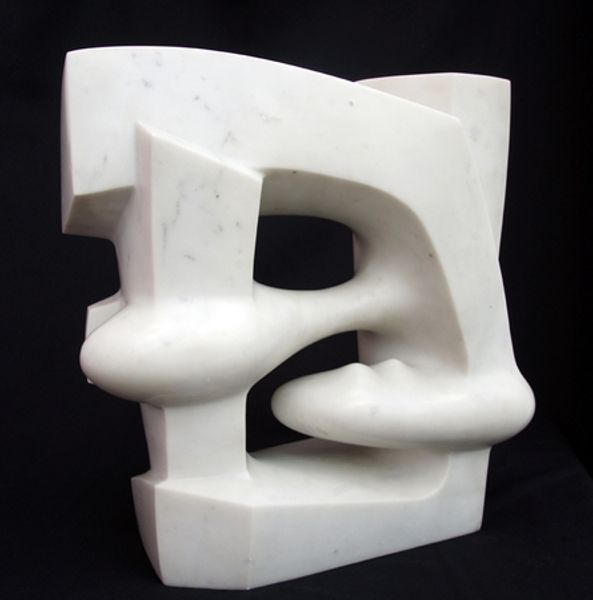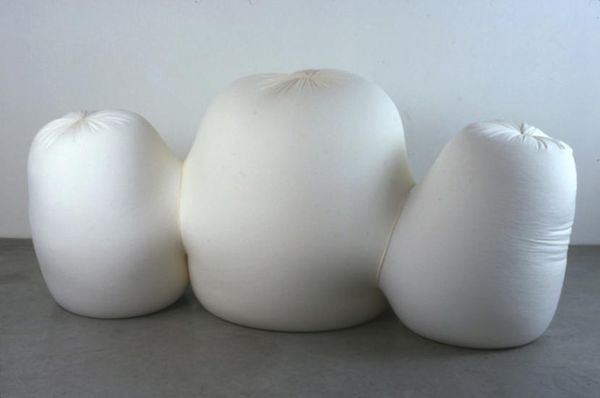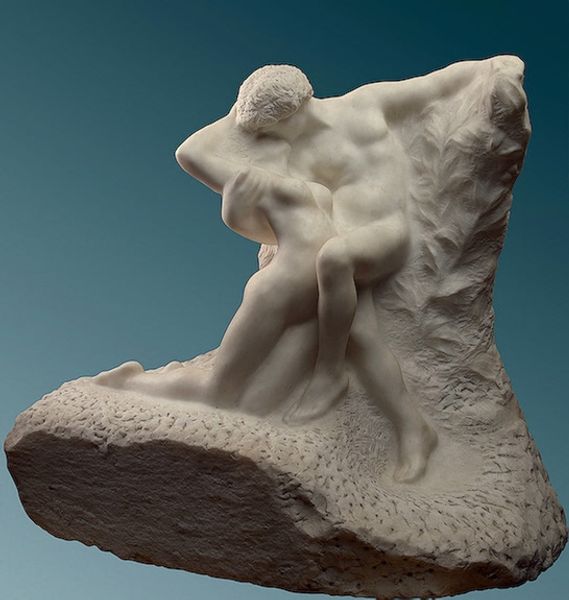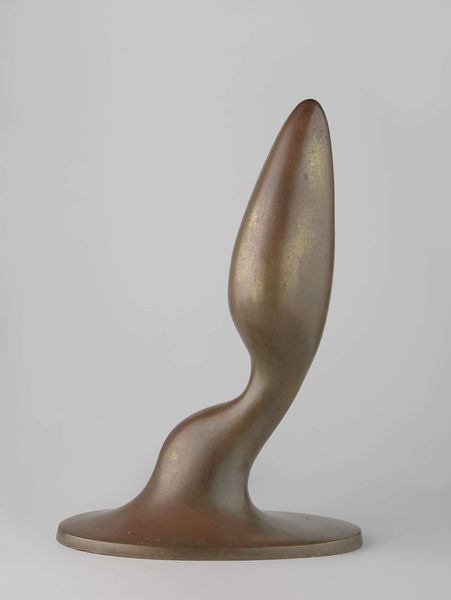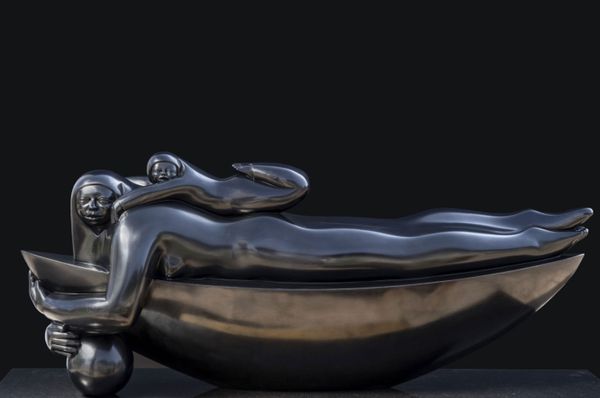
assemblage, sculpture, wood
#
assemblage
#
constructivism
#
dada
#
sculpture
#
biomorphic
#
abstraction
#
wood
#
surrealism
Copyright: Jean Arp,Fair Use
Editor: This is "Human Concretion" created in 1935 by Jean Arp. The smooth, rounded forms are very striking. It looks almost like a simplified, organic shape. How do you interpret this work? Curator: Observing this biomorphic sculpture, I find the smooth, uninterrupted surfaces draw attention to the work's mass and volume. Arp is very clearly interested in the essential forms; the abstraction here eliminates detail and encourages contemplation of the piece's internal structure. Do you see how the interlocking shapes create a dynamic tension, even within this limited color palette? Editor: I do, especially how the light reflects off of the curves differently. Is that part of his goal, drawing attention to the interplay of forms? Curator: Precisely. The piece transcends simple representation. Instead, Arp presents an independent object with its own formal logic. Notice how the wood materiality informs the texture, allowing for a play of light and shadow across the form. He utilizes a vocabulary of shape to engage with ideas rather than recreate nature literally. What impact do you think that has on our experience of the piece? Editor: It definitely prompts a more internal and personal reading, less about recognizing a specific thing and more about feeling the flow and balance. It is as if it almost demands to be touched. Curator: Exactly! That instinct to engage is essential. Through its streamlined, organic shapes and attention to the inherent qualities of wood, this "Human Concretion" stands as an exploration of the fundamentals of sculptural form. The careful balance is something I'd never appreciated as fully until this conversation. Editor: I've learned that looking closely at material and structure helps reveal meaning in abstract sculpture, particularly within a Surrealist framework.
Comments
No comments
Be the first to comment and join the conversation on the ultimate creative platform.
